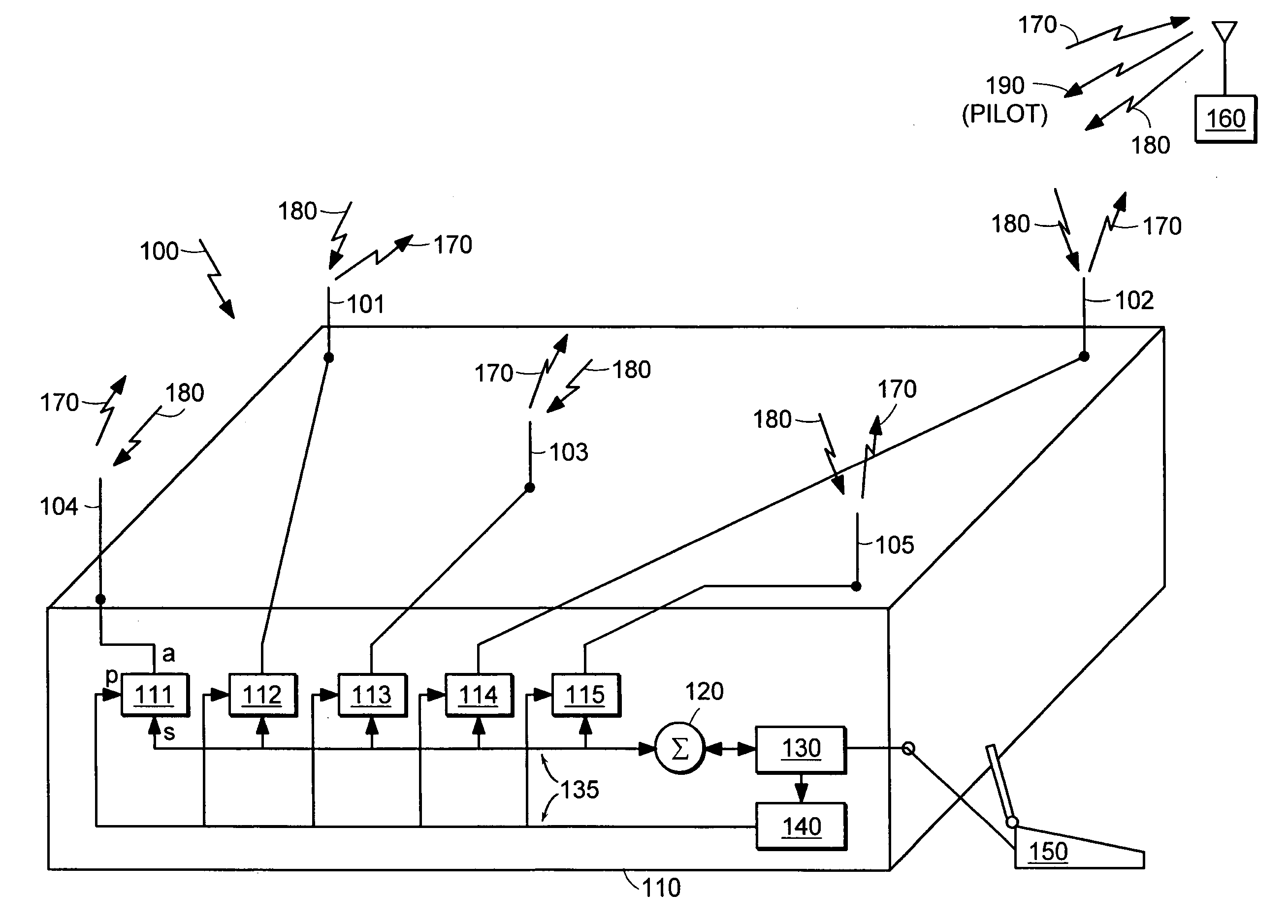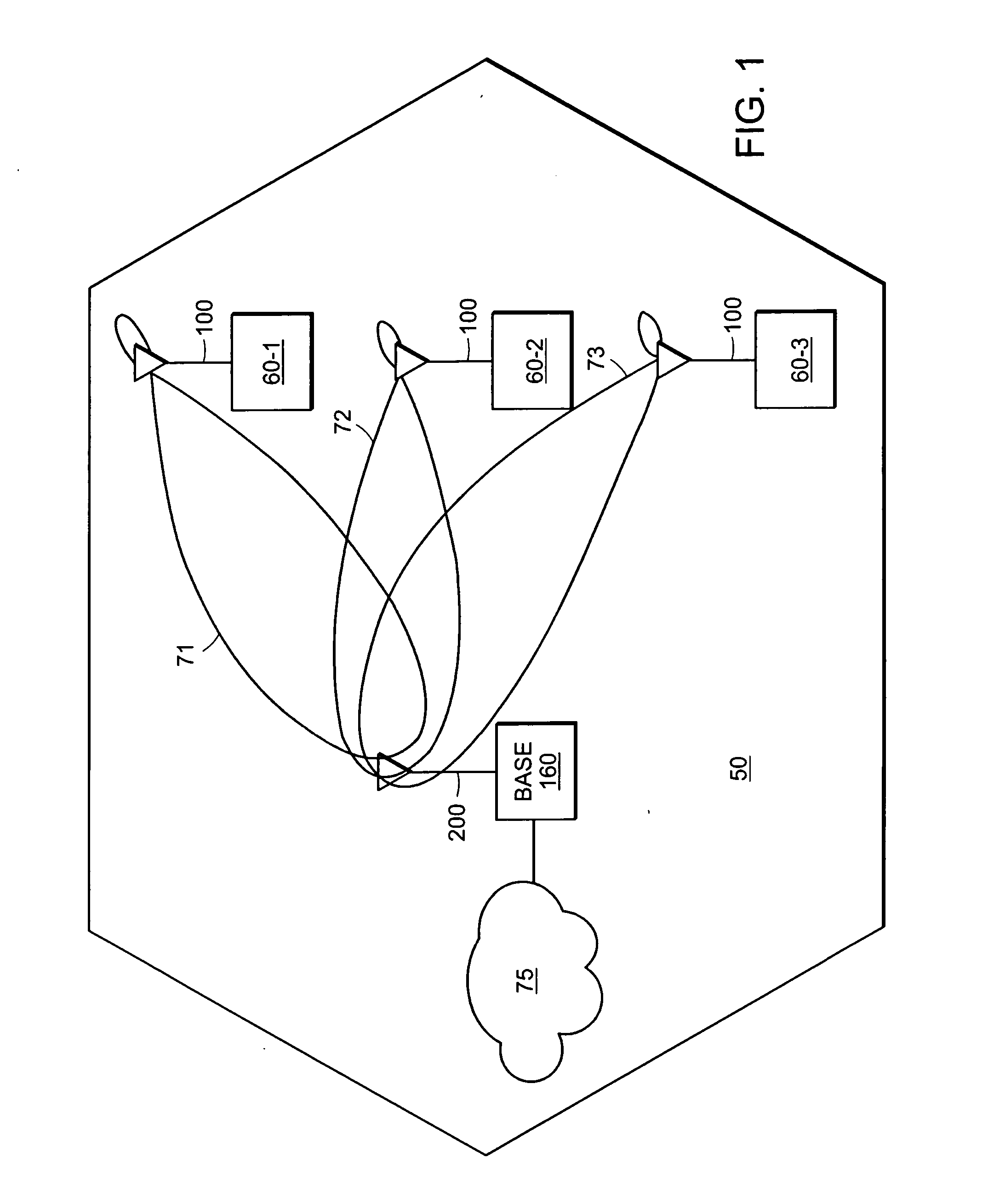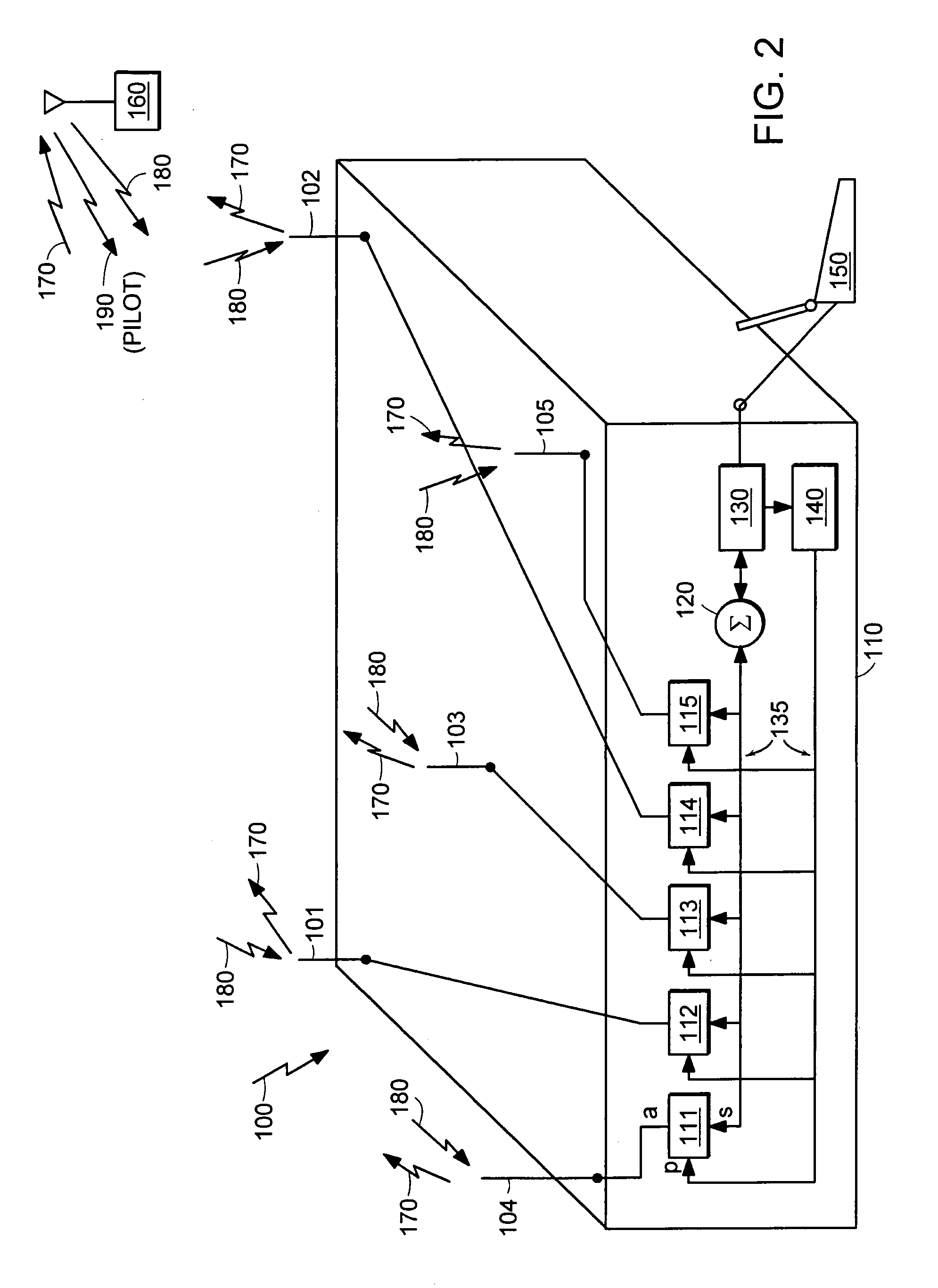Adaptive antenna for use in wireless communication systems
a wireless communication system and adaptive antenna technology, applied in the field of adaptive antennas for wireless communication systems, can solve problems such as interference, multi-path fading, radio frequency signals transmitted from senders, stations or mobile subscriber units, etc., to increase the capacity of a cell, increase the effective transmit power, and increase the data rate
- Summary
- Abstract
- Description
- Claims
- Application Information
AI Technical Summary
Benefits of technology
Problems solved by technology
Method used
Image
Examples
Embodiment Construction
[0044]A description of preferred embodiments of the invention follows.
[0045]FIG. 1 illustrates one cell 50 of a typical CDMA cellular communication system or a Wireless Local Area Network (WLAN), such as an 802.11 network. In a CDMA cellular communication system, the cell 50 represents a geographical area in which mobile subscriber units 60-1 through 60-3 communicate with centrally located base station 160. In the WLAN, the cell represents a geographical area in which client stations 60-1 through 60-3 communicate with a centrally located Access Point (AP) 160. For purposes of illustrating the principles of the present invention, the embodiment disclosed is that of a CDMA cellular communication system; however, the principles apply similarly to a WLAN unless otherwise specified. Thus, it should be understood that descriptions of a base station 160 apply to an access point 160 and descriptions of mobile subscriber units 60-1 through 60-3 apply to client stations 60-1 through 60-3. The...
PUM
 Login to View More
Login to View More Abstract
Description
Claims
Application Information
 Login to View More
Login to View More - R&D
- Intellectual Property
- Life Sciences
- Materials
- Tech Scout
- Unparalleled Data Quality
- Higher Quality Content
- 60% Fewer Hallucinations
Browse by: Latest US Patents, China's latest patents, Technical Efficacy Thesaurus, Application Domain, Technology Topic, Popular Technical Reports.
© 2025 PatSnap. All rights reserved.Legal|Privacy policy|Modern Slavery Act Transparency Statement|Sitemap|About US| Contact US: help@patsnap.com



